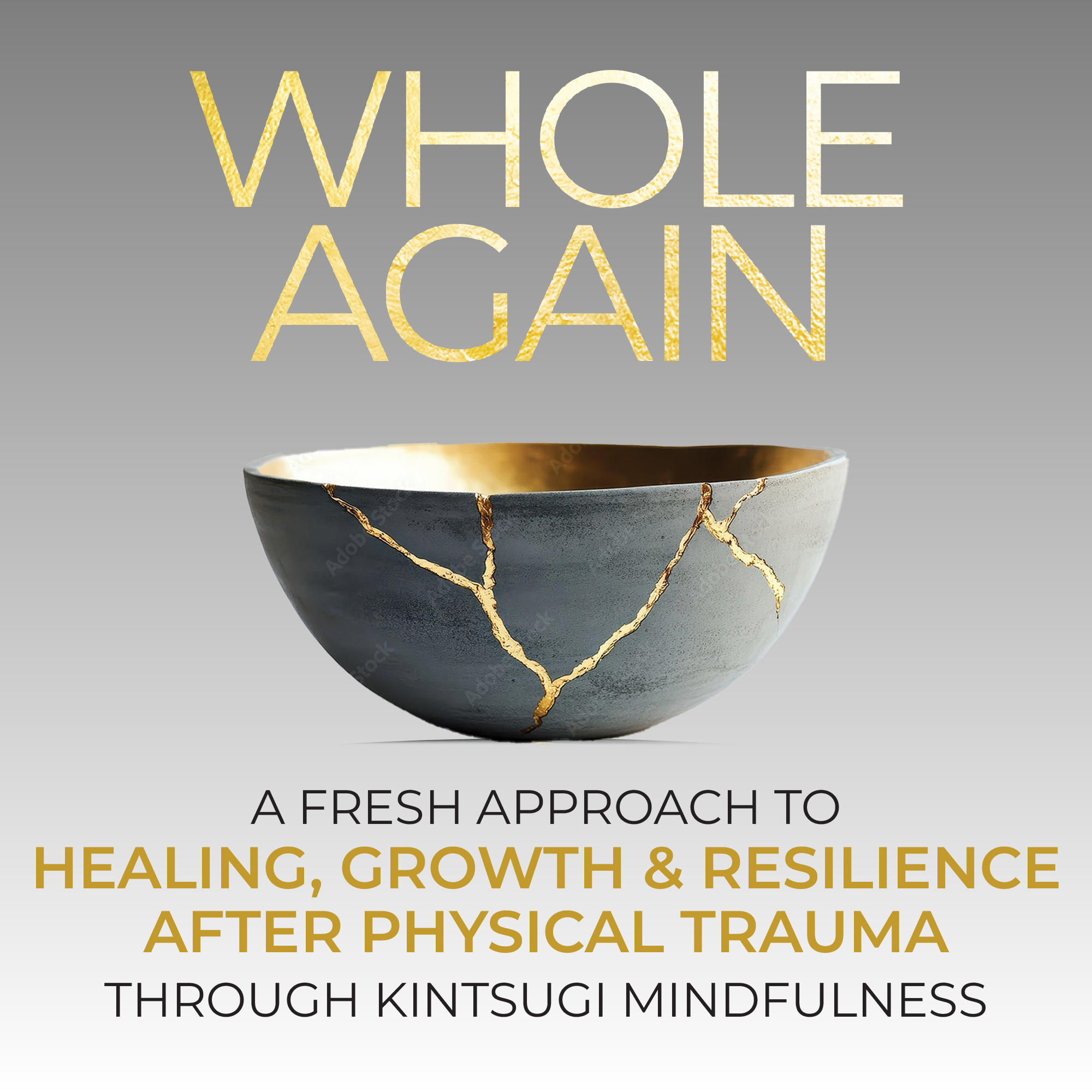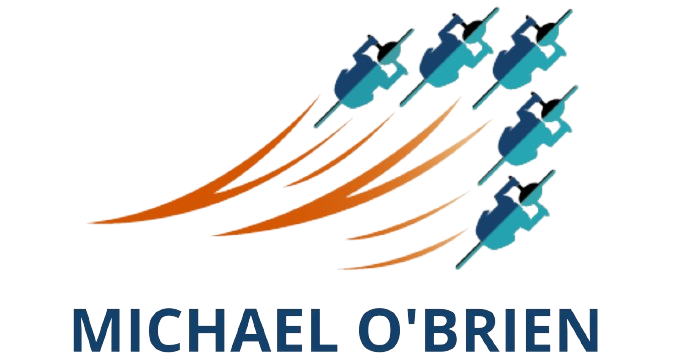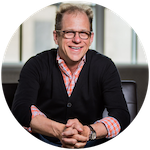
199 | How Stoicism Can Support Trauma Recovery, Spark Transformation, and Build Resilience
What if the key to your healing lies not in avoiding pain, but in transforming how you respond to it?
If you’re navigating the aftermath of injury or trauma, the emotional weight can feel just as heavy as the physical. In this episode, you’ll learn how the ancient philosophy of Stoicism can become a powerful ally in reclaiming your resilience and turning everyday struggles into stepping stones.
Takeaways:
- Discover the Stoic mindset shift that helped one survivor transform his recovery journey.
- Learn how to practice the “dichotomy of control” to release anxiety and focus your energy where it counts.
- Explore how the phrase “the obstacle is the way” can reshape your view of setbacks and open new paths to growth.
Tune in now to learn how to apply these Stoic principles and take one empowering step forward in your healing today.
00:00 Introduction and Gratitude
01:15 Exploring Stoicism
06:32 The Dichotomy of Control
09:51 Embracing Obstacles as Growth Opportunities
12:35 Practical Exercise for Control
13:57 Conclusion and Next Steps
If this episode sparked something within you, please download it and share it with a friend.
Kintsugi is the Japanese art of repairing broken pottery with gold, silver, or lacquer, highlighting the cracks rather than hiding them. It embodies the philosophy of wabi-sabi, which finds beauty in imperfection and teaches that breakage and repair are part of an object’s history, making it more valuable rather than less. Metaphorically, Kintsugi reminds us that our challenges, scars, and setbacks are not something to be ashamed of but can be embraced as a source of strength and transformation.
Discover how to scroll less and live more by taking my Free Smartphone Wellness Audit by clicking phone.
Did you know that stickers are wonderful visual cues to help you create healthy habits? You can get one of my free Pause Breathe Reflect sticker by clicking sticker.
To discover more and sign up for My RIPPLE EFFECT newsletter by clicking Ripple Effect.
We can also connect on LinkedIn.
Subscribe to be sure you don’t miss any of the micro-meditations, wellness tips, and guidance that I publish every Monday, Wednesday, and Friday at 7:11 am.
If you feel you need more mental health support, please contact NAMI. This is a good place to start. If you have a question or comment, please reach out to Michael@PauseBreatheReflect.com.
With Whole Again: A Fresh Approach to Healing, Growth & Resilience after Physical Trauma through Kintsugi Mindfulness, listeners explore resilience through personal stories of trauma, scars, and injury while learning to overcome imposter syndrome, self-doubt, and perfectionism with self-compassion, self-love, and self-worth. Through insightful discussions on stress management, mindfulness practices, and digital wellness, the show offers practical tools like breathwork, micro-dose meditation, grounding techniques, visualization, and daily affirmations for anxiety relief and stress relief. Inspired by the art of kintsugi, the podcast embraces healing as a process of transformation, encouraging a shift in perspective from worry and being overwhelmed to gratitude and personal growth. By exploring the mind-body connection, micro-dosing strategies for emotional well-being, and holistic approaches to self-care, this podcast empowers listeners to cultivate emotional resilience and live with greater balance and intention.
Transcript:
In this episode, I’ll share one concept with you that was a game changer in my recovery.
Hey there, it’s Michael. Welcome to Whole again. A show about helping survivors of physical injury and trauma reclaim their strength and resilience. Through the wisdom of Kazuki. In this episode, I’ll share three concepts of stoicism, which will be a focus for us during the month of April, and one concept.
That was a complete game changer in my recovery. But first, I would like to say thank you. Thank you for being here. Thank you for showing up as one survivor to another. I know that showing up isn’t always easy, so the fact that you’re here means the world. So thanks for showing up, and thank you for being a fellow survivor.
Okay, let’s dive into stoicism, a topic we’ll explore more of during the month of April, because I think it lends itself nicely to what we’re going through, to our healing, our growth, and becoming more resilient on our way to feel whole again. Now, I will admit, I think I was sleeping through history class when we studied Greek history.
Because I don’t remember anything about Greek stoicism until I went through my recovery, and it was quite helpful as I approached my journey, my healing journey, and I’m sure you’re more informed about the concept of stoicism than I was back in the day. You might have heard of Marcus Aelius or Seneca, or perhaps Current day Ryan Holiday, who promotes stoicism a lot through his books.
I like stoicism because it can be really relatable. It’s not some abstract theory. It’s actually a practice that marries up nicely with our pause, breathe, reflect, practice. It can help us navigate what we’re facing, our healing journey with grace and ease and some perspective so we don’t turn little bad moments as I like to say.
Bad days or even longer. And if you’re part of our community, you know that we all go through something. In fact, we are going through something right now. Many of us. And here’s the thing, and I know you know this, we might be facing a physical obstacle through injury or trauma, but that’s also to our mental emotional.
Spiritual health as well, and what stoicism gives us, it gives us a way to think about what is in front of us. We all know that, as Buddha said, actually Buddha really didn’t say this, but many times it’s attributed to him that suffering is life. His quote is really more about dissatisfaction being part of life, but I’m not gonna split hairs.
You get my vibe. The thing is, in life, there’ll be some pain, there’ll be some discomfort, there’ll be some suffering. And again, what Stoicism teaches us is that while we don’t have control over everything, over what happens to us, we do have control on how we wish to respond. When I think of stoicism, I think of the quote that’s often attributed to Viktor Frankl, the Holocaust survivor, which records show that he probably didn’t say it, but he lived the concept of it between stimulus and response, he said.
Or reported to say there’s a space, and in that space is our freedom. It’s our chance to grow. So all this ties together and I can’t wait to share as we introduce stoicism to you, three concepts and an exercise that you can use to help you on your healing journey. So let’s start here. What the heck is stoicism?
Anyway, that’s a great question. So let’s dive into it. So it came out of ancient Greece founded by a guy named Zeno, ZENO, and the most famous practitioners, you know, the ones that get all the LinkedIn posts or Instagram posts, well, their names, I’ve already referenced them upfront. People like Marcus Aurelius or the playwright Seneca, or a Slave Turn teacher, epic.
Now, these guys weren’t monks meditating on top of a mountain. No. They were in the community. They were leaders, warriors, survivors. They faced exile and illness and war, and even death. The worst possible health outcome. I. There’s actually a really cool philosophy around death in stoicism, which we’ll get to later on this month.
Their philosophy, if you had to boil it down to one sentence, was focus on what you can control and let go of what you can’t. And I have a hunch that you’ve heard that before, some time in your life. But for a second, I want to invite you to really reflect on. Think about this. How much of our suffering comes from trying to control the uncontrollable, the past, the future, other people’s opinions, whether we get sick or injured.
When we focus on what’s within our control, our thoughts, our actions, our mindset, that’s when we reclaim our power. That’s what stoicism can help us do as we approach our recovery. And within stoicism, there’s something called the dichotomy of control, and Titus probably said it best. He said, some things are up to us and some things are not.
Pretty simple, right? This is known as the dichotomy of control. So as we look at our healing process, there is so much that’s outside of our control. For example, how long will this take? When will I feel better? When will I feel like I’m normal or whole again? No one knows. Not even your medical team knows they are just working off of percentages.
Most people recover in X amount of time. They are not you. So we don’t have full control over our timeline, nor do we have control over what other people will say or think. We can’t control them, although we can get really tired trying to do so. Also, we can’t control what’s happened in the past. This is something I had to work on so much.
In the beginning part of my recovery, I was arguing with reality and what I discovered was that reality along with Mother Earth, the universe, and God. Who make up my mug, my MUG. They’re my grand baristas that fill up my coffee mug, that pour my latte. Well, they win a hundred percent of their arguments. So here I was trying to argue with the past.
I wasn’t accepting that my accident had happened. I couldn’t control what happened, but I could control, and this is what stoicism can teach us, is that we have control. About our mindset, how we show up for things. We can control our daily habits. We can control how we respond to our setbacks because we will have setbacks as we go through this healing process.
And here’s something I should note. Maybe underscore bold, italicize, you name it. All an effort to bring more attention to it. I think a lot of people think of stoicism. They think, well, I have to suppress all my emotions. I have to be stoic. And that’s not what we’re talking about. You are gonna go through a range of different emotions.
I know I did. So it’s not about suppressing your emotions. That’s what I was doing well before my accident. I’d put all my emotions, I called them rocks in my backpack, and I would just carry them around with me. And that backpack was dang heavy. It’s not about pretending that you’re okay. Everything is fine.
It’s all good. It’s about recognizing what we’re feeling, what we’re sensing, and also recognizing what’s in our hands, what we have control over, and showing up, taking thoughtful action. Maybe it’s just a small step. Thoughtful action. That small step towards creating a better tomorrow, as I like to say, in the beginning of this episode, I said I would share the concept that was a game changer for me in my recovery, and it ties back into stoicism specifically.
It’s something that Marcus really has said. He said, what stands in the way becomes the way. In other words, the obstacle is the way, which is something I imagine you’ve heard before, but it’s a lot easier said than understood or done. Here’s the way of looking at it, instead of looking at our challenges as roadblocks, stoicism teaches us that they are opportunities for growth.
I don’t believe that every challenge is a growth opportunity, but many more of our challenges, we can view ’em this way, can be opportunities for post-traumatic growth. It’s a simple phrase, but it’s a hard concept to practice. I say that from experience, like a lot of things it makes for an easy social media post, but staying with it is hard.
But when you do. It will change your approach to your healing journey. We can get curious with ourselves if we want to take the perspective that each obstacle that we see is not getting in our way. It’s part of our way. It’s part. Our pathway to growth. Now, I will say that not everything that happens, in my opinion, is an opportunity for post-traumatic growth, but certainly many more of our roadblocks, the way we see them, can be opportunities for growth.
So one question to ask ourselves, when we face a roadblock, when we face a challenge, how can I grow from this? Even the hardest moments. We can use most of them to help build more resilience. So when we meet the next roadblock on our journey, we’re better equipped to navigate that with a little bit more grace and ease.
And as I mentioned, stoicism is a philosophy, but not one just to read about. It’s about living it day in and day out. Our approach to mindfulness. When we do these things day in and day out, it can help us in our recovery and to help us practice it. I wanna share an exercise with you to bring this whole idea of control into view to make it practical for you.
So take out a piece of paper. You can do it now, or you can hit pause and come back to this and draw a line down the middle of the page. On one side, the left side, I want you to write down everything that’s frustrating you, stressing you out, causing you pain, causing you suffering, but it’s outside of your control.
All that stuff. And take a moment to pause, breathe, reflect on what you put into that column. Now on the column to the right, on the other side of the line, write down everything that’s in your control, your daily routines, your mindset, your responses, all of it. And as you head into the rest of your day, as you continue along on your healing journey, my invite to you is to focus in on the second column.
What’s on the right side of that line, the stuff that’s within your control, and then let me know how it goes. As always, thanks for being here and joining me on whole again, so we can step into who we are becoming as we heal, grow, and become more resilient.
In this episode, we covered a few things. We did an intro to Stoicism. We addressed the dichotomy of control, and I shared the one concept that was a game changer in my recovery, and that concept is the obstacle is the way. And I hope you’ll join us for the whole month of April as we dive into stoicism a little bit deeper.
So we can understand how we can use the philosophy in our healing journey. And again, thanks for being here. Thanks for being a survivor,
and if you wish to learn more about creating beautiful ripples and how to prevent a bad moment from turning into a bad day. Please visit my website, which is Michael O’Brien shift.com and sign up for my newsletter called The Ripple Effect, and I hope you’ll join us every Monday, Wednesday, and Friday at 7:11 AM here on the Kazuki Podcast.
And discover how we can all celebrate our scars as golden symbols of strength and resilience. Until then, remember, you can always come back to your breath. You’ve got this and we’ve got you.




Leave a Reply